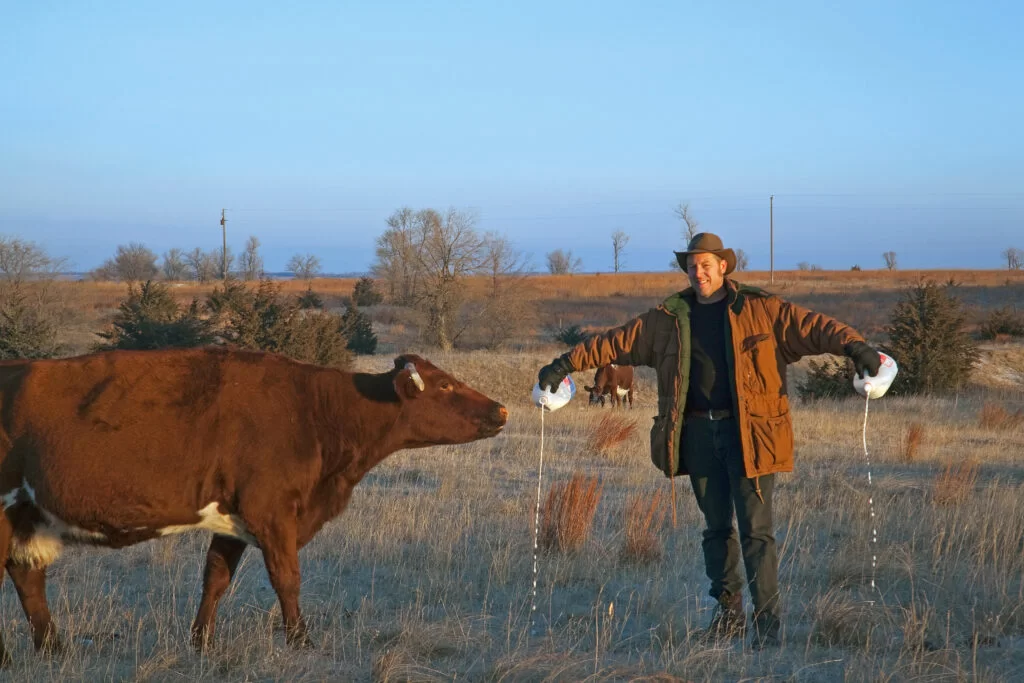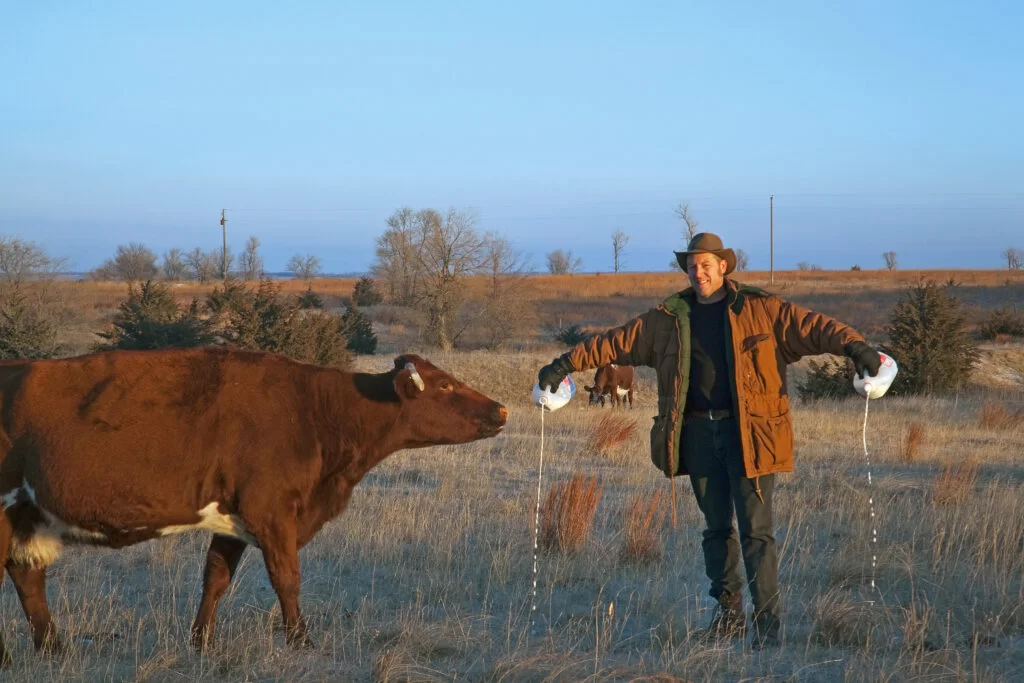IN AN EERIE SEQUEL to Nebraska Life’s probing look at UFOs, there have been reports of strange sights and sounds high in the sky. But after an intense investigation, we discovered that it’s simply cows jumping over the moon after munching on a milk splashdown in their grass.
The bovine feast on this super salad served up by a farmer near Orchard seems to delight the cows so much they literally launch into orbit. Like many historical moments in science, this agriculture discovery came by accident.
In 2002, at his first farm near Page, David Wetzel had finished using the fats in the milk for his butter and cheeses and needed to get rid of the excess skim milk. So after his dumping 600 gallons of the milk on one of his fields every other day, the cows were soon stampeding over to the milky grass.
“They always seemed to be over at that field,” said Wetzel, a former Illinois steel executive.
Soon, Wetzel realized that the grass on that field was much healthier, fuller and tastier (for the cows, we presume). It became even more intriguing when Wetzel took soil samples with a probe in the dead of winter with temperatures at 15 below. The probe couldn’t budge the frozen tundra on most of his farm, but the soil on his milkshake field was moist. The testing device easily poked through the earth.
The dairy farmer’s findings left neighbors scratching their heads, except one guy – Terry Gompert, the out-of-box educator, who specializes in holistic land management and had been Wetzel’s farming guru in a course at the University of Nebraska-Lincoln Extension in Center.
“He appreciates stirring the pot,” said Wetzel of Gompert.
“Raw milk appears to be helping yield, quality and taste of the grass,” Gompert said.
“I believe it is all about adding microbes to the soil and enhancing the soil life.” Gompert’s studies on the milky grass produced some impressive findings. Basically, the unpasteurized milk fed the good bacteria in the soil, added needed calcium and vitamin B, and saved the grass from ultimate predators like grasshoppers, who can’t process milk’s sugar. And Gompert is ready to keep milking ideas.
“Chocolate milk might help if the milk is raw and the chocolate is not over processed,” Gompert said. “Adding sugar to the land enhances the bacteria in the soil. Chocolate contains sugar of types. Beer and wine contain yeasts and alcohol if raw. There may be some benefits, but I don’t know with fine beer or wine.”
That wine theory has been uncorked in British Columbia where Canadian beef producers have been serving buckets of red wine to Angus cattle. Although food inspectors were said to have concerns about yeast, the grape-guzzling cows reportedly are more relaxed, which enhances the flavor, produces finer marbling and fat as sweet as candy.
Wetzel said the research at his farm shows that a gallon of raw milk sprayed over an acre is cheaper than fertilizer. His hope is that more farmers will use milk on grass to pack on cow calories. The “Man of Steel” says this revenue option could revive the almost extinct small dairy farm, such as his, which he operates with his wife, Barbara, and six helpers – their children ranging from 2 to 18.
Wetzel abandoned the steel industry for green acres on the first day of the new millennium, and Gompert, who advised him to start a grass-based dairy, sees a possible proof of this research from several millennia ago.
“In the Bible, there is a statement of going to the land of milk and honey,’ Gompert said.
So, perhaps if Wetzel gets his milky way, it will be a field of dreams for dairy farmers, and hungry cows, all over Nebraska.
Alan J. Bartels/Nebraska Life
https://www.facebook.com/nebraskalifemag/






Comments are closed for this article!